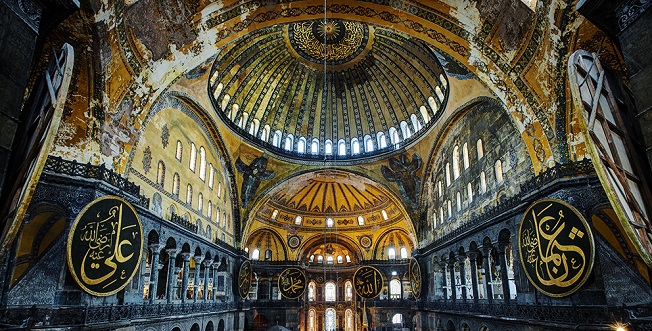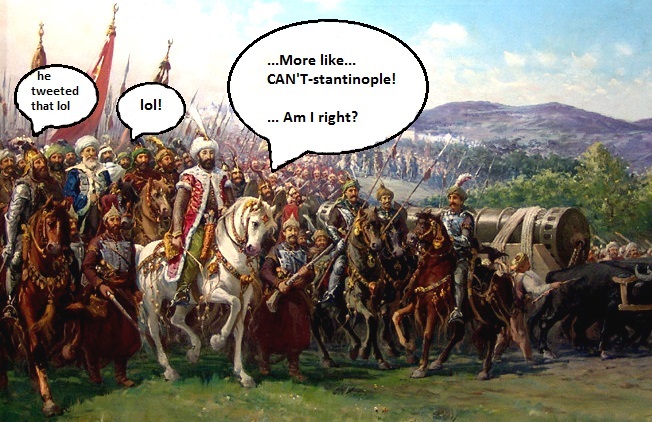Power, politics, and blood fill the pages of Constantinopolis, a novel by James D. Shipman. Set in the year 1453, the city of Constantinople proves to be a jewel in the East, a prominent Christian city that has been held the attention from any and all would-be conquerors. Many have tried and all have failed to capture Constantinople, as the city’s walls cast a looming shadow over any army that wishes to invade. Yet in a world where Kings drop like flies, how long can the walls of Constantinople last when faced against a bold new ruler, bent on fulfilling his destiny to destroy Christianity at its roots? Constantinopolis is an historical fiction that tells the true story of the Ottoman siege in prosaic and modern language, its goal to tell an entertaining and educational story about one of history’s biggest battles. But as with all battles, there are high points and low points, and ultimately Constantinopolis wavers in the delicate balance between telling a great story and simply being another textbook.
For those not familiar with the Ottoman siege, Constantinopolis is a useful companion. It portrays events in an historically accurate way, and Shipman delivers authenticity by stressing the importance of faith and family to the societies in play. On one side of the fence, the establishment is embodied in Constantine XI, Emperor of Constantinople. The city has seen far better days, yet the people seem to love Constantine and see him as a capable ruler. Constantine must also balance his duties against his love life with Zophia, an entirely fictional romantic foil. Opposing Constantine is the disruptive Mehmet II, a brash, young sultan with a lot to prove. While Constantine’s story arc is primarily one of being honorable to his fellow Greeks, Mehmet’s storyline is thematically composed of his desires for glory and vengeance against those who doubt his capabilities.
The chapters themselves are woven seamlessly in their transitions. Each chapter focuses on the point of view of either Constantine or Mehmet, with a few occasional chapters devoted to the Hungarian rulers who would play an important part in the siege’s conclusion. Unfortunately, each chapter becomes more and more repetitive. For example, Mehmet leads a failed Ottoman charge in one chapter, followed by another where Constantine discusses the enemy’s failure from the previous chapter. This will then get broken up by Constantine trying to organize his love life with Zophia. While the point-of-view format is a great way to spin the narrative and make the characters more believable, the writing does not always work. The dialogue between secondary characters is as interesting as porridge and the reader will likely see the phrase “As you know” countless times.
Not all the writing is poor, however. The characterization of Constantine is historically accurate and Shipman does a fine job representing him as a young ruler with too much on his plate. The emperor’s mind constantly wanders between his vastly different personal desires and professional duties, and this thinking stands in contrast with Mehmet, the Muslim Sultan who sees his personal desires as his professional duties. However, Constantine’s chapters eventually become quite uninteresting, again due to repetition. Constantine tries to gain the affections of Zophia, a beautiful woman who returns his love with loyalty. Their relationship is important, and when things get rocky between them, Constantine makes poor decisions. While the romance is forced and seemingly arbitrarily thrown into the mix, it does help to advance the plot. In the long run, Constantine is simply a likable enough protagonist without this extra angle.
Countering the good guy Constantine trope is the villainous Muslim, Mehmet. While many writers would paint him as a mustache-twirling caricature, Shipman gives the reader ample understanding of the sultan’s motives for wanting to capture Constantinople. Living in the shadow of his father and his Grand Vizier Halil, Mehmet acknowledges that he was not always a wise ruler and wishes to make up for his previous failures by adding Constantinople to his empire. His advisers trust the counsel of Halil, who goes against Mehmet’s interests at every turn and often makes a fool out of the young wolf. Readers will find themselves rooting for Mehmet many times, which paints both warring leaders in shades of grey. While Mehmet’s methods may seem cruel, his faith and his desire for personal growth add humanity to an historically complex character.
Of course, this is a story about war and action scenes are bound to pop up, which are as entertaining as they need to be for those unfamiliar with the historical outcome. Shipman’s description of the battles is vivid, and interestingly enough only seen from the viewpoint of specific characters. Staying true to history, it is unlikely that Mehmet and Constantine would have ever met face-to-face, swords drawn, in the middle of a field while bodies flew every which way around them. Shipman handles the battle scenes with care, and yet everything else is described in much fewer words. A palace is simply described as that – a palace. A wall is simply a wall. Shipman wastes no time in painting the world, which is both good and bad. On one hand, it is a relief not to sift through seven pages just to read the description of a tree. On the other, it would help to have more detail in certain aspects of the novel.
Overall, Constantinopolis is a short read with many great moments. Sadly, there are less than stellar moments that truly weigh down the novel. While it is historically accurate, the modernist dialogue and forced romantic subplot dragged much of the excitement. There is an epilogue at the end which explains what happened to each character after the battle as well, and while it is short, it should be interesting to those who are not as brushed up on their history. If you are inclined to learn more about the great siege of Constantinople, you can purchase the book from Amazon here.
This book was reviewed using a copy provided by the publisher for that purpose.
© 2014, The Indie Mine. All rights reserved.






